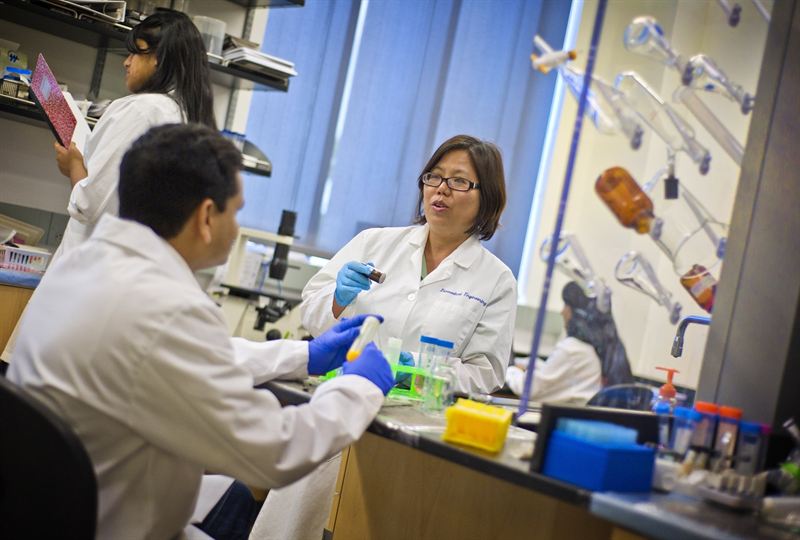UT Arlington bioengineer wants to use nanomedicine to treat peripheral artery disease

Researcher lands American Heart Association grant
A UT Arlington associate professor is working with the American Heart Association on a new method that could use injected nanoparticles to recruit stem cells from the patient’s own blood to build needed stents in a patient’s failing blood vessels.
Kytai Nguyen, a bioengineering associate professor, is working on the two-year, $140,000 grant to develop ways to more effectively treat peripheral artery disease, a malady that affects about 8 million Americans.
“It’s a narrowing of the arteries that affects so many people. There isn’t a lot of research being done on it right now,” Nguyen said. “Many times people with this disease are faced with amputation or death.”
About 30 percent of people with peripheral artery disease must have their affected leg amputated within two years and about 50 percent die within five years.
Peripheral artery disease happens when plaque builds up in a person’s arteries, which carry blood to all parts of the body. Plaque is made up of fat, cholesterol, calcium and other substances in the blood. The disease usually affects the legs but it can have consequences elsewhere in the body.
“We have created this nanoparticle scaffold, which we inject into the body,” Nguyen said. “Those scaffolds attract stem cells that help in building natural vasculature to replace narrowed or shut-down blood vessels.”
Current doctors use angioplasty or place artificial stents in failed blood vessels.
Liping Tang, interim bioengineering chair and professor, said Nguyen’s method would certainly be less invasive than current practices.
“It has the potential to save many patients’ lives in addition to millions of dollars in health care costs,” Tang said.
Nguyen’s work is an example of research excellence at The University of Texas at Arlington, a comprehensive institution of almost 33,800 students and more than 2,200 faculty members in the heart of North Texas. It is the second largest institution in The University of Texas System. Visit www.uta.edu to learn more.
Herb Booth, hbooth@uta.edu, 817-272-7075
The University of Texas at Arlington, www.uta.edu
Tags:


